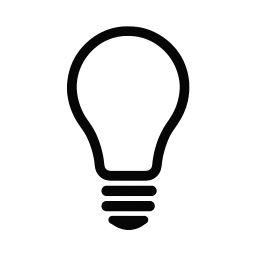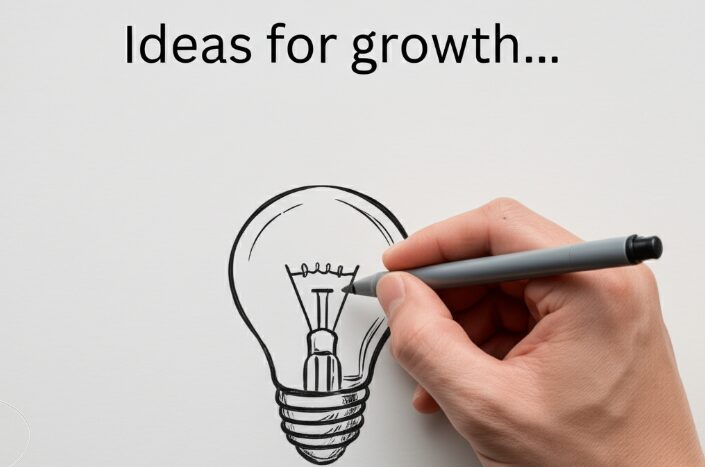Remember when the worst thing about technology was an overly helpful paperclip (unofficially named Clippy) asking if you wanted help with your letter? Those were simpler times.
Now we live in an era where Facebook tracks when teenage girls delete their selfies—knowing that moment of low self-esteem makes them perfect targets for cosmetic advertisers. Where Adobe forces users to agree to AI training on their private files just to access software they’ve already paid for. Where companies can reach into your home and essentially ransomware your own products until you pay them again.
Suddenly, Clippy doesn’t seem so annoying anymore.
When Microsoft Was the Villain
Cast your mind back to the 1990s, when the biggest tech scandal was Microsoft bundling Internet Explorer with Windows. The government came down on them with “hell and fury” for the audacious crime of including a web browser with their operating system. Whether you agreed with the antitrust action or not, at least we knew what we were fighting about.
Compare that to today’s tech giants. Facebook doesn’t just bundle software—it psychologically profiles vulnerable teenagers to maximize ad revenue. Google, supposedly one of the premier data mining companies on Earth, can’t tell the difference between legitimate content and sex trafficking ads, yet somehow manages to censor ordinary user comments with surgical precision.
The contrast is jarring. Microsoft got dragged through federal court for including a web browser. Meanwhile, modern tech companies openly admit they want to prevent you from fixing products you own because it might “take money away from them,” and somehow that’s just accepted as normal business practice.

The Clippy Difference
Here’s what made Clippy special, and why he’s become an unlikely symbol of resistance: he had no ulterior motives.
When Clippy offered to help you write a letter, he wasn’t reading the contents to build a psychological profile. He wasn’t trying to sell your data to advertisers. He wasn’t attempting to upsell you to Microsoft Office Premium Plus Ultra Edition. He just genuinely wanted to help you format your document properly.
If you fired up that old Dell Dimension 233 today—assuming it still worked after 28 years—and started Microsoft Word without any internet connection, Clippy would still be there. Happy, enthusiastic, ready to assist. No subscription required. No cloud authentication. No forced updates. Just a helpful office assistant doing exactly what he was designed to do.
Try that with modern software. Adobe won’t let you use Photoshop without checking in with their servers. You can’t buy QuickBooks anymore—it’s subscription only. Even basic features require constant internet connectivity and monthly payments for software you theoretically “own.”
The Modern Digital Dystopia
Today’s tech landscape reads like a consumer nightmare. Companies routinely change the terms of service after you’ve already bought their products. They push firmware updates that can brick your devices unless you agree to new terms. They claim it’s illegal for you to repair items you purchased, while somehow making it legal for them to remotely disable those same items.
The examples are everywhere. Echelon exercise bikes that require subscription fees to use features that were advertised as included. Smart thermostats that stop working unless you create an online account. Printers that refuse to scan documents when they’re low on ink—even though scanning doesn’t require ink at all.
Meanwhile, the comment sections are flooded with obvious spam bots, but try to express a genuine opinion that goes against platform orthodoxy and watch how quickly it gets flagged or shadowbanned. The same companies that can’t detect blatant sex trafficking advertisements somehow have pinpoint accuracy when it comes to censoring dissenting voices.
The Clippy Resistance
This is where Clippy becomes more than just nostalgia—he becomes a symbol of what we’ve lost and what we need to reclaim, as Louis Rossman eloquently argues in his recent call to action.
Rossman’s proposal to change profile pictures to Clippy isn’t just a cute meme. It’s a form of digital resistance. It’s saying you remember when software worked for users instead of exploiting them. It’s declaring that you’re tired of being the product instead of the customer.
Think of it as a modern version of the Sons of the Harpy masks from Game of Thrones (minus the slavery part). When one person puts on the mask, it’s just an individual statement. But when hundreds, then thousands of people adopt the same symbol, it becomes impossible to ignore.
The power isn’t in the individual act—it’s in the collective message. As Rossman puts it, when a CEO logs into their Slack and sees 10,000 Clippy avatars staring back at them, they should understand intuitively that something has changed. Their employees, partners, and customers are no longer willing to be accomplices to anti-consumer practices.
The Critics Have a Point about Clippy
Not everyone is buying into the Clippy revolution. Reddit users responding to Rossman’s video raise legitimate concerns about the effectiveness of such symbolic protests. One commenter noted the “Kony 2012 vibes,” referencing the viral campaign that generated massive online engagement but produced little real-world change.
The criticism goes deeper than just skepticism about profile picture activism. As one user pointed out, “this is classic slacktivism. Pick a very broad and vague thing people hate and then convince them doing this arbitrary action does anything. It doesn’t.”
There’s also the unintended consequences problem. One thoughtful commenter warned that Microsoft might completely miss the message and instead interpret widespread Clippy adoption as consumer demand for a new AI-powered Clippy—exactly the kind of data-harvesting, privacy-invading assistant the movement is supposed to oppose.
The Slacktivism Problem
The harshest critics argue that changing profile pictures is the definition of slacktivism—low-effort activism that makes people feel good without creating meaningful change. They point to years of social media campaigns that generated buzz but failed to produce lasting reform.
“People really underestimate the amount of effort it takes to legitimately make any meaningful change,” wrote one Reddit user. “I think it’s shown time and time again the past few years that peaceful protests or slacktivism doesn’t accomplish anything.”
This criticism isn’t entirely unfair. Social media campaigns often substitute for more substantive political engagement. When people feel they’ve “done their part” by changing a profile picture, they may be less likely to engage in the harder work of contacting representatives, supporting legislation, or making real economic choices that impact corporate behavior.
But Maybe That’s Missing the Point
However, some defenders of the Clippy movement argue that critics are missing the strategic purpose. As one Reddit user explained, Rossman’s idea is to “weaponize slacktivism.” The profile picture change isn’t meant to be the end goal—it’s meant to identify allies and create a network of people willing to take more substantive action when opportunities arise.
“If only 1% of Clippies are actually willing and able to quietly sabotage unethical practices, that’s more than enough if you can assemble thousands of Clippies,” one supporter wrote.
The Reality Clippy, I mean Check
Critics also point out a fundamental problem with the premise: Microsoft isn’t the same company it was in the Clippy era. As one commenter noted, Microsoft has been primarily a cloud services company for the last decade. “Windows is not a product anymore, it’s a tool for cultivating the product: you and your data. Appealing to how things were in the XP era is meaningless, because that’s not who they are anymore.”
This observation highlights a deeper issue with nostalgic appeals to “the good old days” of technology. The companies and economic incentives that created simple, helpful software like Clippy have been fundamentally transformed by the internet economy and data capitalism.
Small Acts, Real Impact?
Maybe you’re the engineer who “forgets” to send that email about preventing competitors from accessing repair parts. Maybe you’re the developer who makes the ransomware firmware update opt-in instead of opt-out. Maybe you’re the prosecutor who has ten cases but only time for six, and you just happen to ignore the one targeting someone who helped consumers fix their own devices.
Every person who refuses to be another cog in the anti-consumer assembly line matters. Every small act of resistance helps prevent us from sliding further into a corporate dystopia where ownership is meaningless and user rights are just suggestions.
A Balanced Approach
The most thoughtful critics aren’t dismissing the sentiment behind the Clippy movement—they’re questioning whether symbolic action alone is sufficient. As one Reddit user put it: “It’s okay to switch profile pictures to show opinions, but let’s be real… If that’s all you do, you don’t deserve a pat yourself on the back; actually getting involved in politics somehow is by far the best way forward.”
This suggests a middle path: using symbolic actions like the Clippy avatar as a starting point for broader engagement, not as an endpoint. The profile picture becomes a conversation starter, a way to identify like-minded people, and perhaps a stepping stone to more substantive action.
Whether the Clippy revolution will accomplish anything meaningful remains to be seen. But the debate it’s generating about corporate power, digital rights, and the nature of effective activism might be valuable in itself—even if the paperclip ultimately can’t clip back as effectively as we’d like.
The Path Forward
The goal isn’t to win every legislative battle—though those victories matter. The goal is to shift the culture so that anti-consumer practices become socially and professionally unacceptable. To create an environment where thousands of small acts of resistance make exploitation impossible to sustain.
When companies see Clippy avatars everywhere, the message should be clear: we remember when technology served users instead of exploiting them, and we want that back. We won’t be silent about subscription ransomware, data harvesting, or the gradual erosion of ownership rights.
For all his flaws and occasional annoyances, Clippy just wanted to help. In an era of malicious technology designed to extract maximum value from users, that simple desire to be genuinely helpful seems almost revolutionary.
So change your profile picture. Join the resistance. Show them that when they push us, Clippy clips back.
Because in a world full of technology that wants to own you, sell you, and control you, maybe what we need is the return of a simple office assistant who just wanted to help you write a better letter.
This article expands on the ideas presented by Louis Rossman in his video “Change your profile picture to clippy. I’m serious” available on his YouTube channel. The original concept of using Clippy as a symbol of digital resistance and the specific examples of corporate exploitation discussed are his work.







Leave a Reply